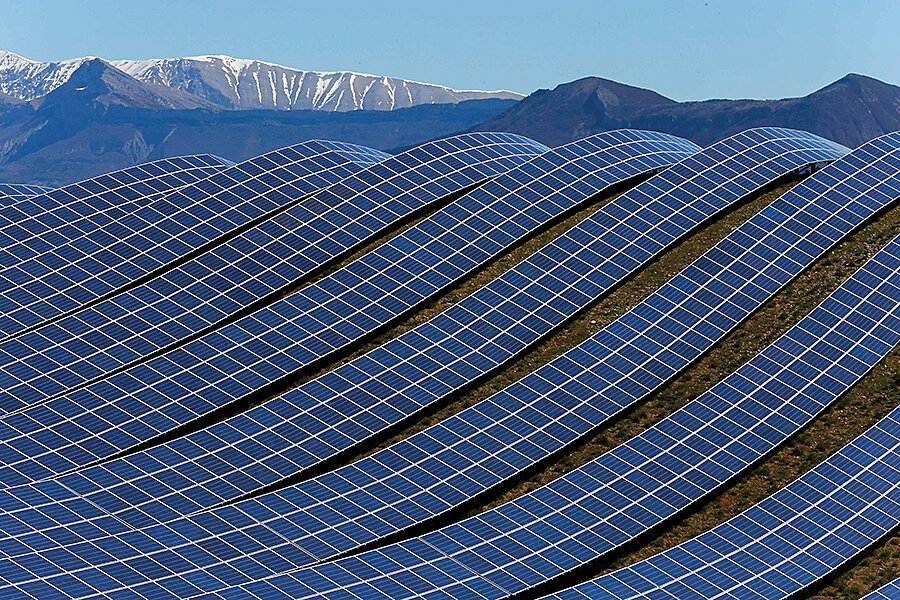A revolution comes in layers
Loading...
A crisis usually arrives amid blaring headlines and a wildfire of worry. That was how the “energy crisis” of the late 20th century seemed. The era of plentiful oil was over. Middle East producers enacted embargoes. Gas lines stretched for blocks. In 1977, then-President Jimmy Carter called the battle against energy shortages “the moral equivalent of war.”
A genuine revolution often arrives quietly, barely noticed because it unfolds gradually and cumulatively. That’s today’s energy revolution.
Oil prices are tumbling. New extraction procedures have made oil and natural gas abundant. But that hasn’t slowed solar, wind, geothermal, and other alternative power sources. Conservation hasn’t slowed either. LED lights and less-voracious appliances are curbing consumption and forcing the mothballing of carbon-spewing power plants.
And that is only the beginning. The next wave is batteries. As you’ll see in David Unger’s cover story (click here), better batteries will make solar and wind power effective when the sun doesn’t shine and the winds don’t blow. As major undertakings such as Elon Musk’s Tesla “gigafactory” improve lithium-ion batteries and manufacture them at industrial scale, prices will decrease and use will surge.
When houses, offices, and industrial plants can produce and store energy sufficient for their needs, then power plants, utility companies, and the electric grid – that 450,000-mile network of high-voltage transmission lines strung across the US that is perhaps the most complex and vulnerable installation on the planet – become less important. There will still be a need for always-available, industrial-scale electricity. But power consumption is already diminishing year by year. Ahead lies a shakeout of the 7,300 power plants in the US, especially the dirtier and less efficient ones.
The energy crisis that gripped the world in the late 20th century was not fought and won. It was worked on year by year by inventors and improvers. Ideas were tried, tested, reconfigured, and enhanced. A Bell Labs physicist came up with the first solar cell in 1941; an engineer at General Electric invented the light-emitting diode in 1962; three scientists from Oxford University conceived of the lithium-ion battery in 1980. Today’s rooftop solar arrays, low-energy lightbulbs, and the power packs that run our cellphones – and soon our houses and offices – are the product of thousands of improvements layered atop those early concepts.
Invention is important. Improvement is crucial. The energy crisis of the late 20th century was a big problem. In the middle of it, it did feel like the moral equivalent of war. But piece by piece, the problem was worked out. Shortage turned into abundance.
There are other crises today. Global climate change is perhaps the biggest of them. The solution will involve millions of ideas, products, and techniques that will improve year after year. A crisis doesn’t go away by ignoring it. It is solved by working on it.








